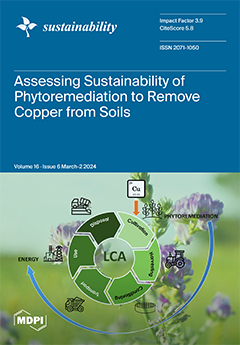Agricultural systems contribute nearly one-third of global anthropogenic GHG emissions and are an important source of GHGs globally. The clarification of the GHG emission pattern from agriculture is of paramount importance in the establishment of an agricultural emission reduction mechanism and the realization of China’s dual-carbon target. Based on the life cycle assessment method (LCA), this paper comprehensively quantifies the greenhouse gas emissions from the agricultural system in China, encompassing rice, wheat, and corn cultivation as well as animal husbandry including cows, horses, donkeys, mules, camels, pigs, and sheep. The analysis covers the period 2000–2020 and examines the spatial distribution, temporal trends, and structural changes in the greenhouse gas emissions within China’s agriculture sector. The main results are as follows: (1) from 2000 to 2020, China witnessed a consistent upward trajectory in its total agricultural GHG emissions, exhibiting an average annual growth rate of 0.73%. Notably, methane (CH
4) emissions emerged as the largest contributor, displaying an overall fluctuating pattern. Carbon dioxide (CO
2) emissions demonstrated intermittent increases with a noteworthy annual growth rate of 3%, signifying the most rapid expansion within this context. Conversely, nitrous oxide (N
2O) emissions experienced decline over the specified period. (2) GHG emissions from cultivation demonstrate an upward trajectory, primarily driven by the CH
4 emissions originating from rice cultivation and CO
2 resulting from straw incineration. Conversely, GHG emissions stemming from animal husbandry declined, with the primary source being CH
4 emissions arising from animal enteric fermentation. Agricultural N
2O emissions predominantly arise due to manure management and nitrogen fertilizer application. (3) Agricultural greenhouse gas emissions exhibit significant variations in spatial distribution, gradually concentrating towards the North China Plain, the middle and lower reaches of the Yangtze River, and the northeast. Specifically, agricultural CH
4 emissions are progressively concentrated in China’s pivotal rice-growing regions, encompassing the middle and lower reaches of the Yangtze River Plain, as well as livestock breeding areas like Inner Mongolia. Agricultural CO
2 emissions primarily concentrate in dryland crop production zones such as North China and Northeast China. Meanwhile, Agricultural N
2O emissions predominantly occur in Inner Mongolia and the North China Plain. China’s agricultural greenhouse gas emissions in 2020 show a significant spatial clustering effect, with hotspots primarily concentrated in Shandong, Anhui, Henan, and other regions and cold spots focused in the western and southern areas. The emission patterns of agricultural GHGs are closely intertwined with farming practices, regional development levels, and national policy; hence, tailored measures for emission reduction should be formulated based on specific crop types, livestock categories, agricultural production activities, and regional development characteristics.
Full article





